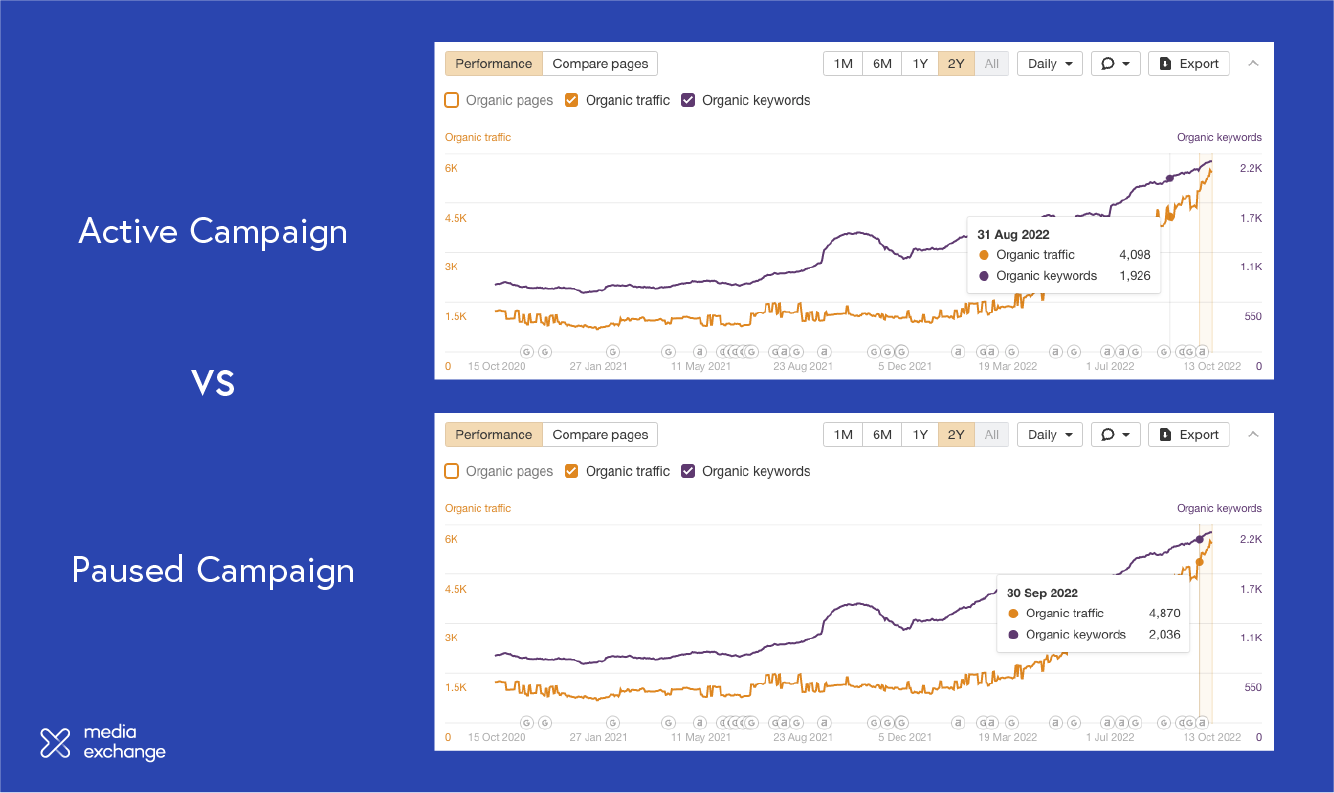“Hi there, can I take your order please?”
We all know where this is going: no matter how much you want that sundae, you’re going to be told the ice cream machine isn’t working. It’s not all that bad though. You can still order a burger or fries, and at least you know you’re going to get your food pretty soon after placing your order.
As much as I try to avoid fast food, I know that it’s almost unavoidable, especially on long road trips or late nights. It’s quicker than cooking, often tastes better, and it can cost less than its healthier counterpart.
I often feel like pay-per-click (PPC) advertising is the fast food of digital marketing: you pay your fee and your inbox has a meal delivered within seconds. But just like real fast food, it only sustains you for a short period of time and shouldn’t form the foundation of your diet.
For more nutritious results, you need PPC’s primary counterpart: SEO.
SEO is much different: you can still pay for the meal, but you might have to wait a while before you can eat it. However, what happens in between ordering helps you build a solid friendship with Google and, perhaps more importantly, your customers.
Although different, SEO and PPC share a common objective: rank for keywords. They both use keyword and campaign settings to manage it, but how they each achieve their goal is what’s different.
Before you read on, queue Eye of the Tiger in the background because my goal is to make this a classic story of how the outcast fights their way into the hearts of everyone.
How are they different?
In both cases, you’re paying to rank for search terms (keywords). With PPC marketing efforts, you pay to have your website shown and for each click it receives. The rate you are charged depends on a few things, but the starting rate is determined by how many other people want to show up for that keyword.
In short: more competitive search terms = more money out of your pocket.
With SEO, you’re also paying to show up for keywords, but the rate you pay isn’t tied to how competitive a keyword is. Rather, it’s about the work involved in getting you to rank.
Let me try and show you the differences.

An anti-Ross pro-con list
As much as I love SEO, I have tried to be as unlike Ross in creating this pro-con list. I’m not trying to cover everything under the sun, and my goal isn’t to get you to cancel your paid advertising. In fact, if you can afford it, do both!
Instead, I want to highlight the key differences and explain why the two processes can’t be measured in the same way.
If you’re not up for much reading, know this: the main difference is the time you get to be on the big stage.
SEO
SEO involves several steps, including using a keyword research tool (or multiple), technical fixes, as well as on-site and off-site optimisations. A typical SEO campaign ties these elements together over a period of time to ensure your brand satisfies Google’s ranking signals and ranks for keywords. High quality SEO will also try and complement social media mentions, traditional advertising or any other marketing strategy you’re employing. But at it’s heart, it’s quite simple: make Google happy and your website will rank.
Here’s the list of pros you care about:
Long term results
While one hit wonders experience great success, they are often forgotten very soon after.

With SEO, If you stop paying, you don’t stop playing. We’ve recently had a client pause their campaign due to increases in costs, but even with their campaign paused, we’ve managed to retain rankings and even increase keywords, helping deliver traffic well after pausing.
SEO helps you build a brand and gain trust. It’s not a case of results being lost when you stop paying — they remain in Google’s SERP (search engine results page) well after. This is essential to building a sustainable brand, especially considering the growing scepticism amongst consumers. SEO gives you an important long-term foothold.
Just like video killed the radio star, short-term thinking has killed many businesses.
Know your customers, like really really
To be effective, pay-per-click advertising targets a very specific set of keywords that have the highest search volumes and will deliver the most clicks. This is done to ensure you don’t spend when people are not clicking.
SEO on the other hand focuses on both popular and unpopular search terms that vary in search volumes to help get an overall idea of the behaviour of your target audience. This allows you to target different funnel stages, own real estate in search results and identify growth areas in your niche.
Cheaper, in the long term
While it might seem like a big investment initially, it’s an investment that pays dividends over time. To give you a practical example, Ahrefs writes the following:
“Our blog ranks for over 95,000 keywords and gets an estimated 419,000 monthly organic visits. If we were to buy that traffic through PPC, it’d cost us an estimated $548,000 per month (or $6.5 million per year). Given that our content team is <10 people and we’re not getting paid millions each in salaries, it’s reasonable to say that SEO is cheaper in the long run.”
It might be hard to see the value in it without knowing what they are paying their staff, but If they’re paying $650,000 per year to their SEOs, this might be the last blog I write for Media Exchange.
(One important note: while you want affordable SEO, you shouldn’t go after ‘cheap SEO’, and here’s why.)
Frequency
It’s a known fact: the more we hear or see something, the more we trust it. SEO allows you to show up more frequently and delivers a more consistent monthly search volume, resulting in a more favourable cost per mention. Google says the following: “SEO can help your site show up more often in relevant searches.” With paid advertising, the frequency is limited by your budget.
Pay-per-click
Pay-per-click advertising guarantees that you’ll show up for a search, but temporarily alongside other people bidding for the keyword. It typically involves four stages: keyword research, bid setting (strategy), ad creation and audience targeting.

Almost as fast as Speedy Gonzales
From the moment you start paying, you are guaranteed to show up in search results – provided your budget isn’t paper thin.
Granular targeting
Google ads also give you an opportunity to have your ads shown in not only search results, but on other relevant websites in the Google Display Network.
Appears above organic rankings
If you haven’t already noticed, paid ads appear higher in search results, but only for as long as you can afford to keep them there.
Flexibility
While we recommend making as few negative changes to a paid advertising budget as possible, paid advertising offers more flexibility than SEO. However, it can be very dangerous if your business has grown dependent on paid advertising.
How to measure SEO?
PPC might seem more desirable in a lot of ways — it’s highly measurable, appears at the top of search results, and generates quicker results. But don’t count out the underdog just yet. There are still plenty of ways to use organic search — all you need to know is how to evaluate SEO properly.
First things first: stop reading this and install Google Analytics if you haven’t already.
Done?
Ok, continue reading.
Measuring SEO’s impact isn’t easy, because often it is a complementary piece in your overall marketing scheme. Existing attribution models are simply too flawed to properly measure SEO’s impact or ROI. To overcome this, we need to think of a purchase as a journey involving many parts, including paid advertising and SEO, all contributing to achieving the end goal.
Michael Pecanek puts it best: “It’s similar to you only praising players who score a goal. Goalkeepers and those responsible for defence won’t be too happy.” What he is saying here is that we need to be aware of the value of assisted conversions.
Paid advertising might have gotten someone to your website, but if there was not content on the site, would they have converted? Probably not. But a focus on SEO recognises that on-site content needs to match user expectations and search intent. PPC can cover the surface level needs, but SEO gets to the heart of what users are looking for — something much harder to quantify in a dollar value.
Similarly, paid advertising can’t upsell existing clients, but long-tail content writing as part of an SEO strategy can.
As we said, if you can do both, then do both. Advertising can earn consumer attention, and SEO can convince them to purchase or use your services. And on top of that, good SEO will eventually get you prime position in search results, whether you’re paying for ads or not.
The cost of not investing in content and SEO far outweighs the cost of investing in it. If you’re not providing the information people need, they’ll find it elsewhere.
So how do you actually measure your SEO efforts though? Consider how visible your website is for important keywords in your niche — it’s the SEO equivalent of ‘share of voice’. We usually measure this against competitors in your industry to understand what your market share is:generally speaking, the higher your market share, the bigger your piece of the pie, so put ROI calculations aside and focus on the bigger picture.

